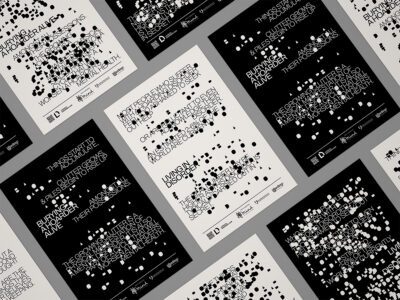Final Project
Living in Disorder
Compared to all other mental disorders, hoarding disorders are treated with the most judgement. Even when it comes to friends and family members, a hoarder may be blamed for their living situation.
This is because most of the information we receive about hoarding disorders aren’t designed to humanise hoarders, but to make a spectacle of their lives. Sensationalised episodes on TV only make matters worse: we are shown the extreme sides only, not the everyday (more unnoticed) type of hoarding disorder.
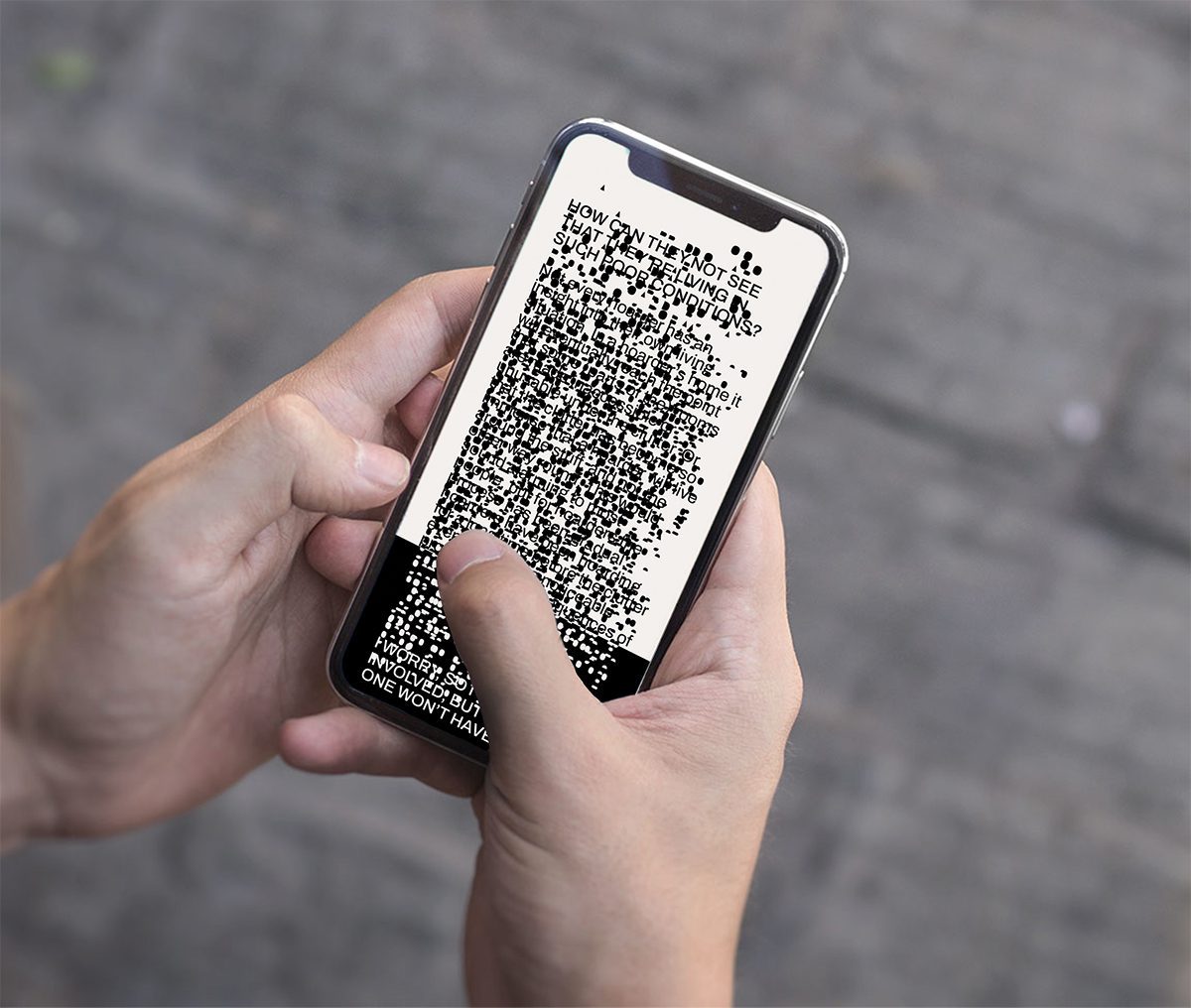
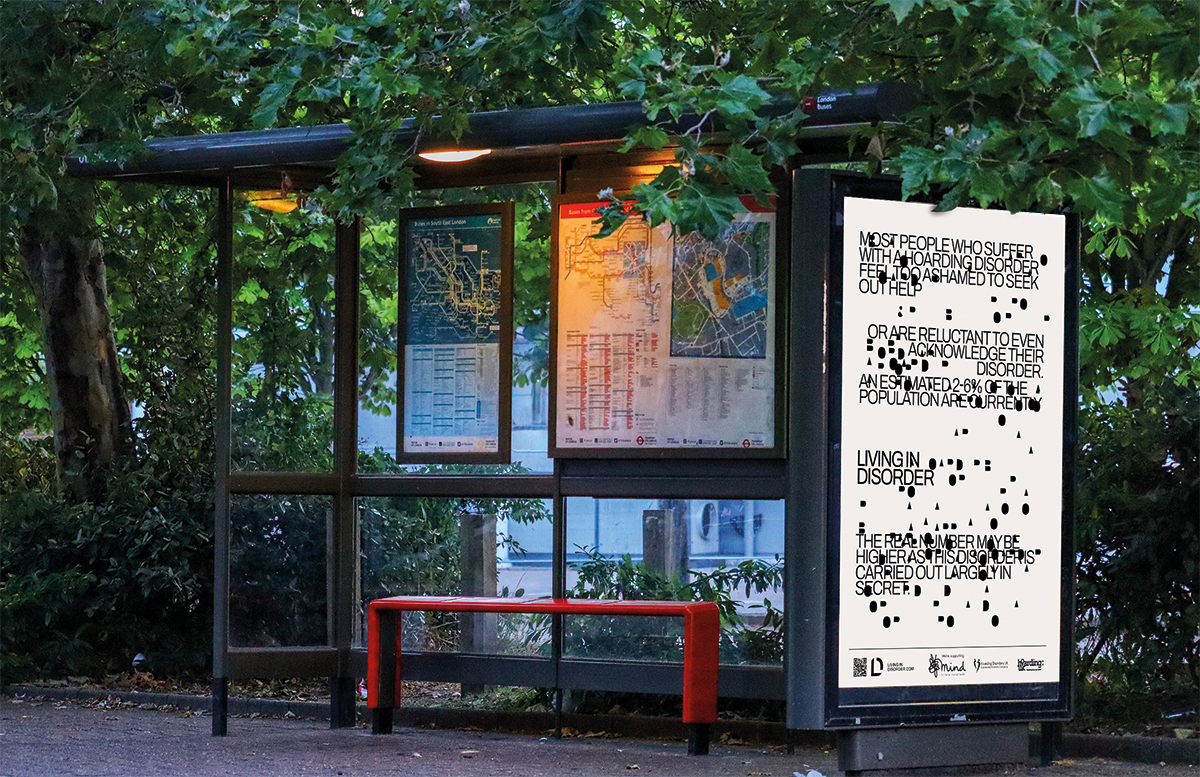
I designed a type-led campaign to re-enact the world of a hoarder on a phone screen, on a poster you’d see on your daily commute. But how do you hoard type? A hoarder collects and keeps many things, including items that most people would consider “waste”.
So, in a letter, these are the cut-outs: the eyes and counters. As you, the user, scroll through the Living in Disorder website, the counters and eyes quickly begin to accumulate on the screen. Over time, the webpage gets overwhelmed with visual clutter.
In the beginning, the design is clean and minimal; it is only with time (and scrolling up and down the website) that the eyes and counters become ‘hoarded’. The text becomes increasingly interrupted with the clutter of previous messages, until eventually the user starts to feel overwhelmed with the state of their screen. The same way a hoarder feels overwhelmed with the state of their own homes.
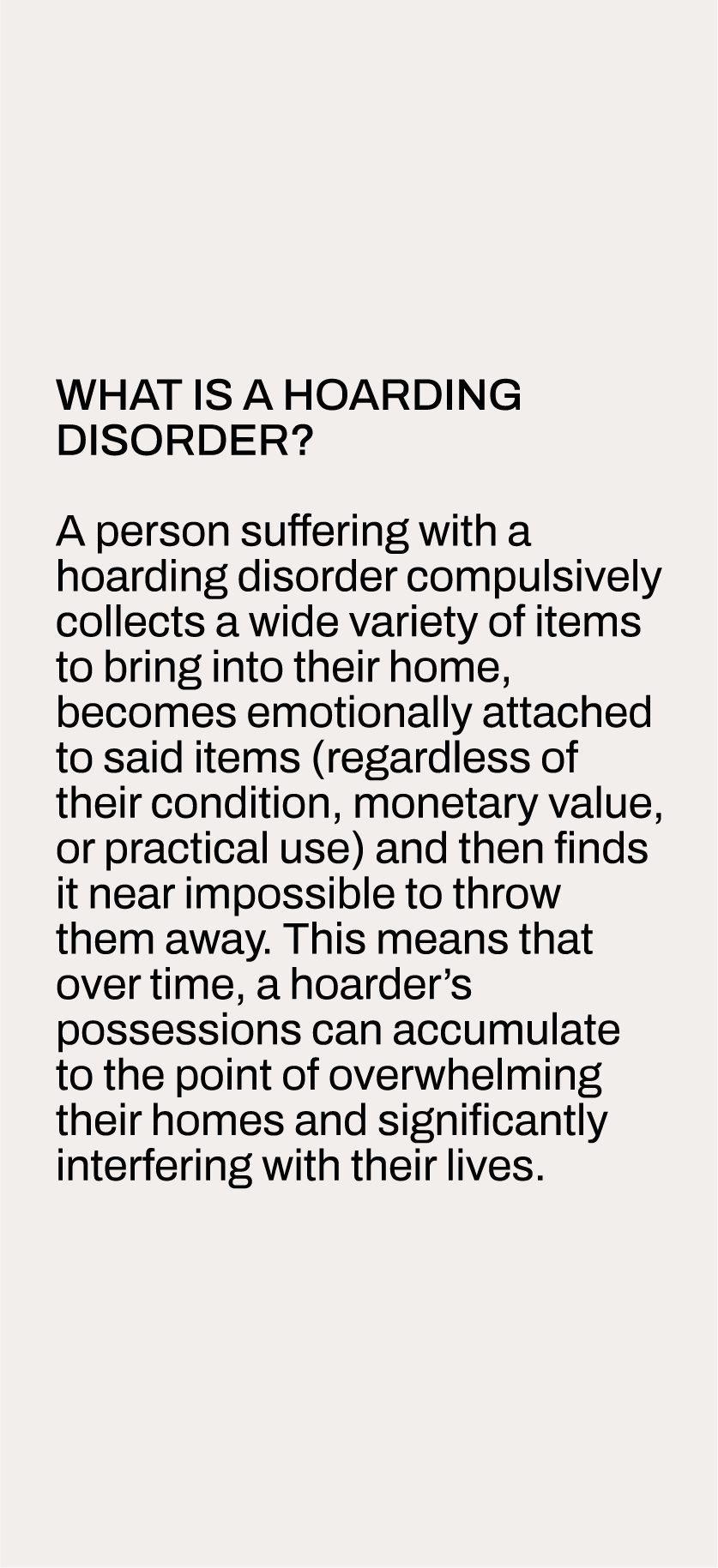
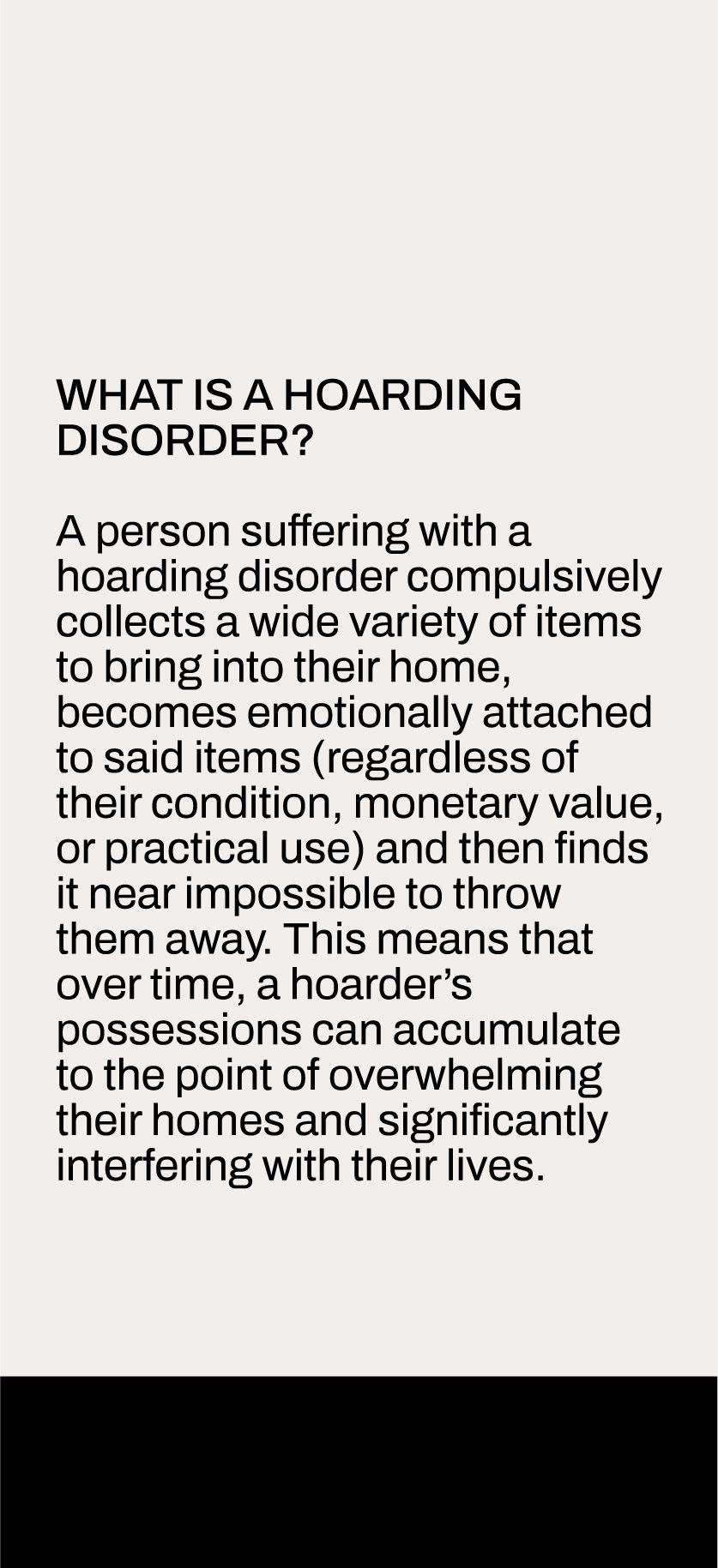
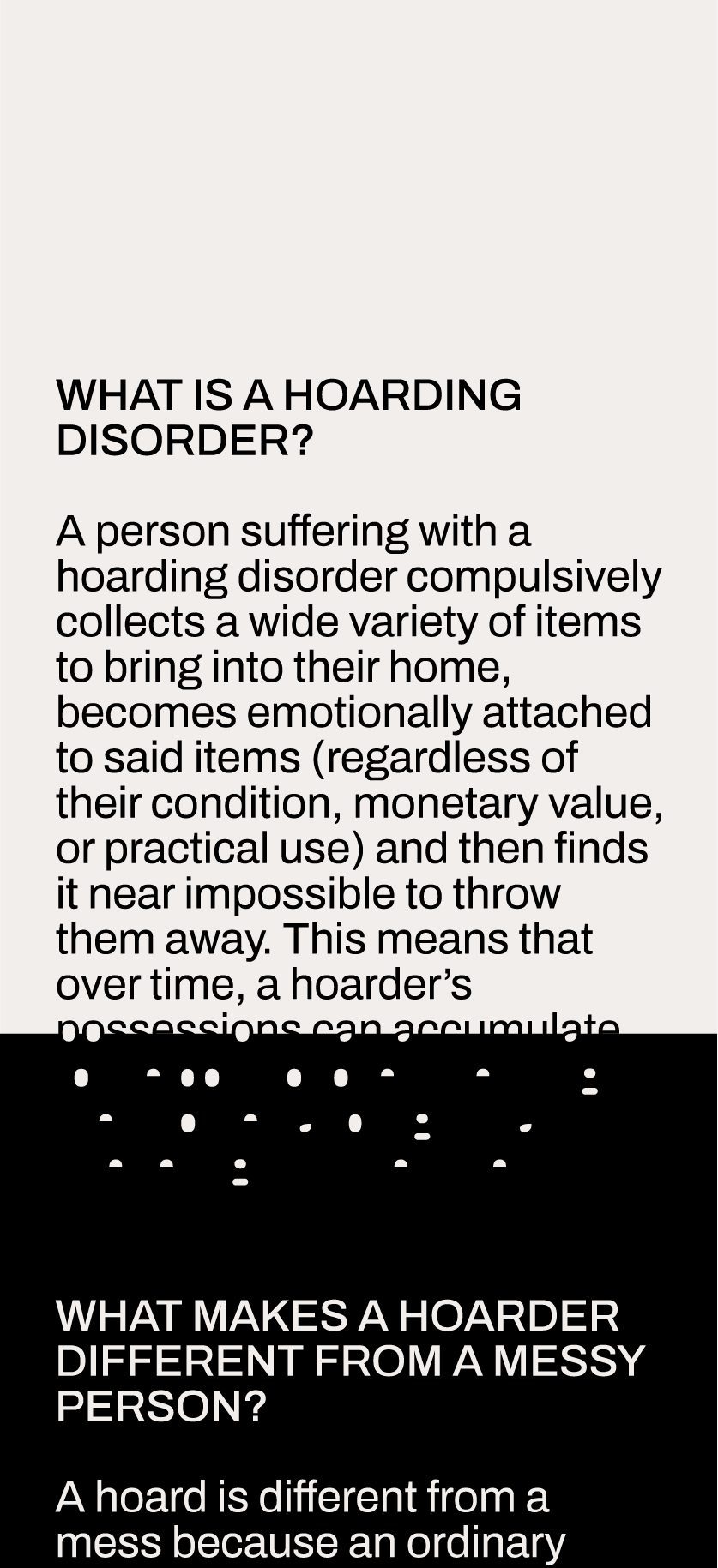
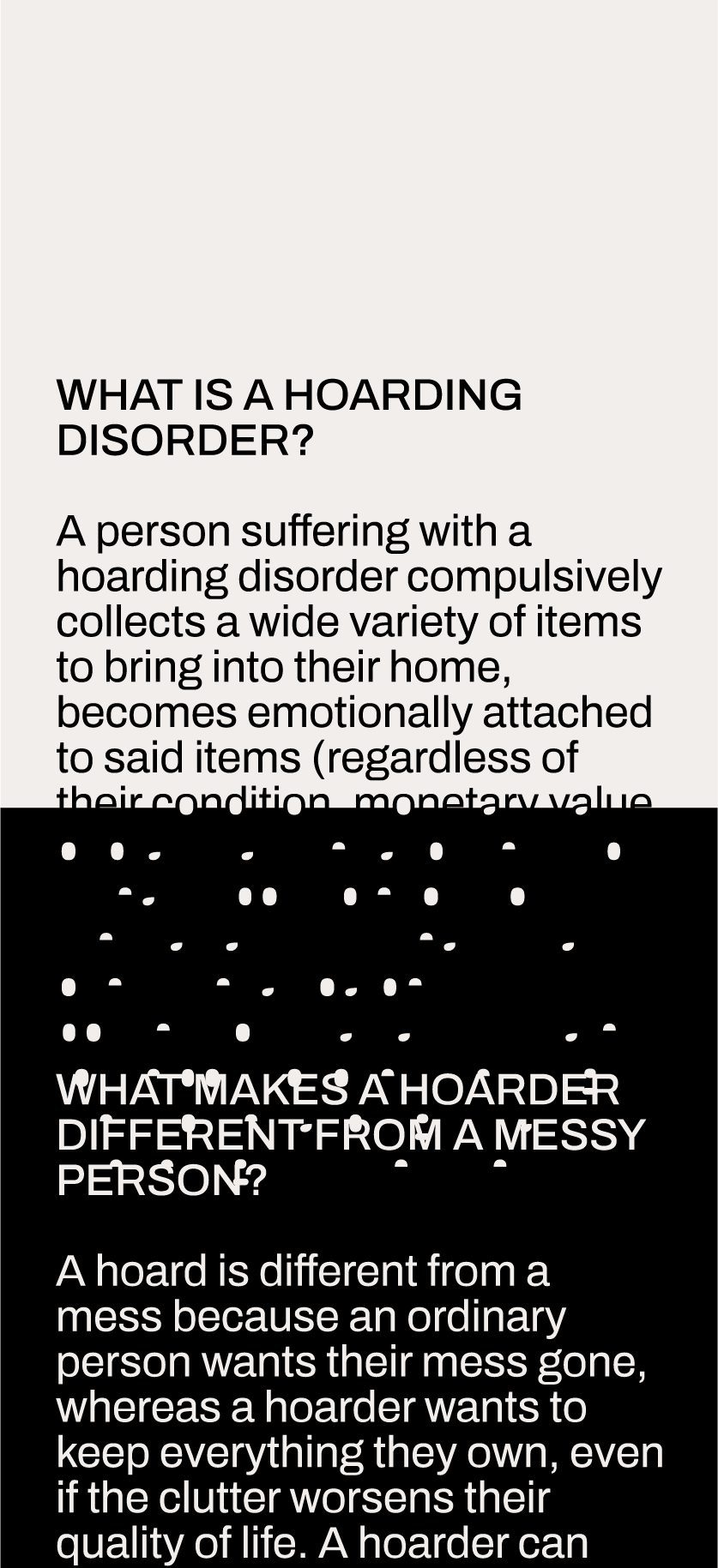
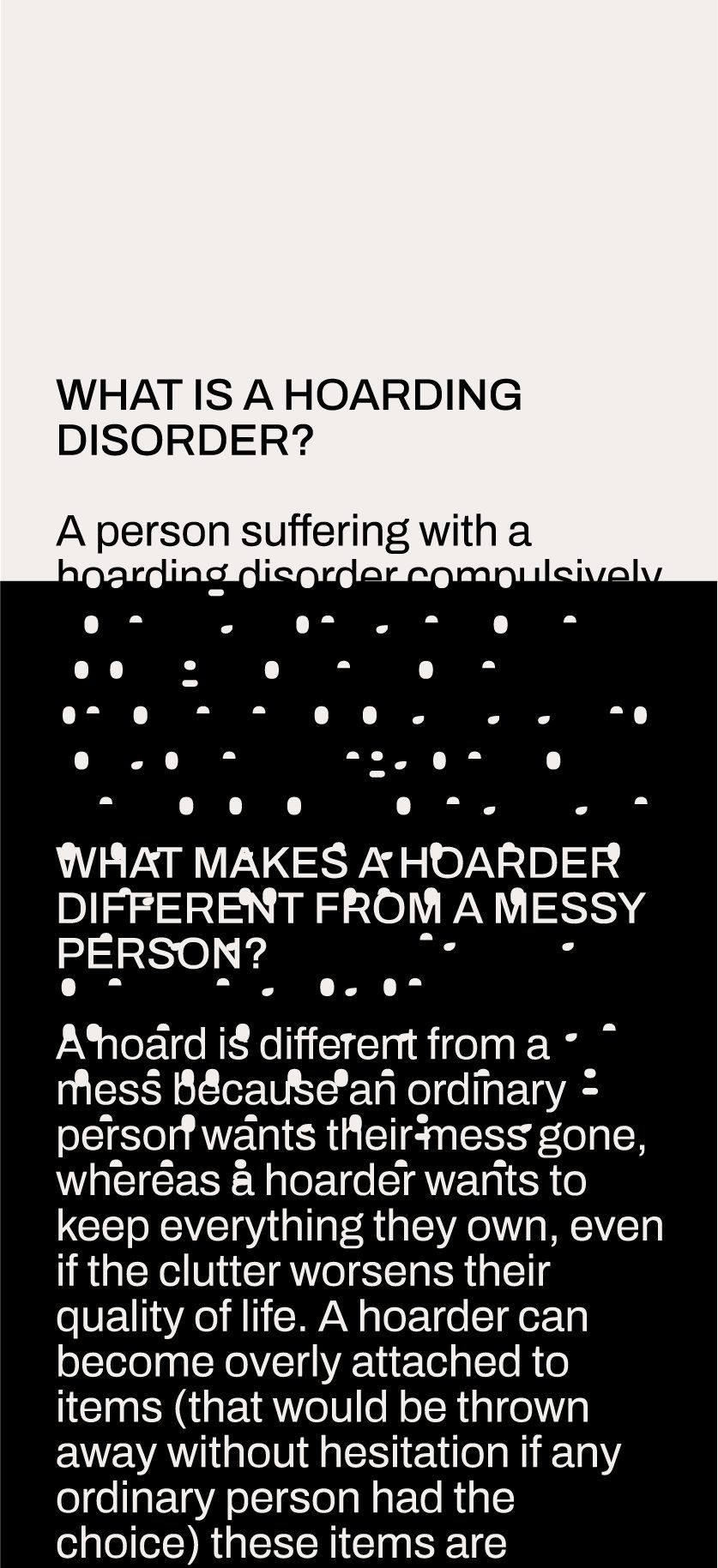
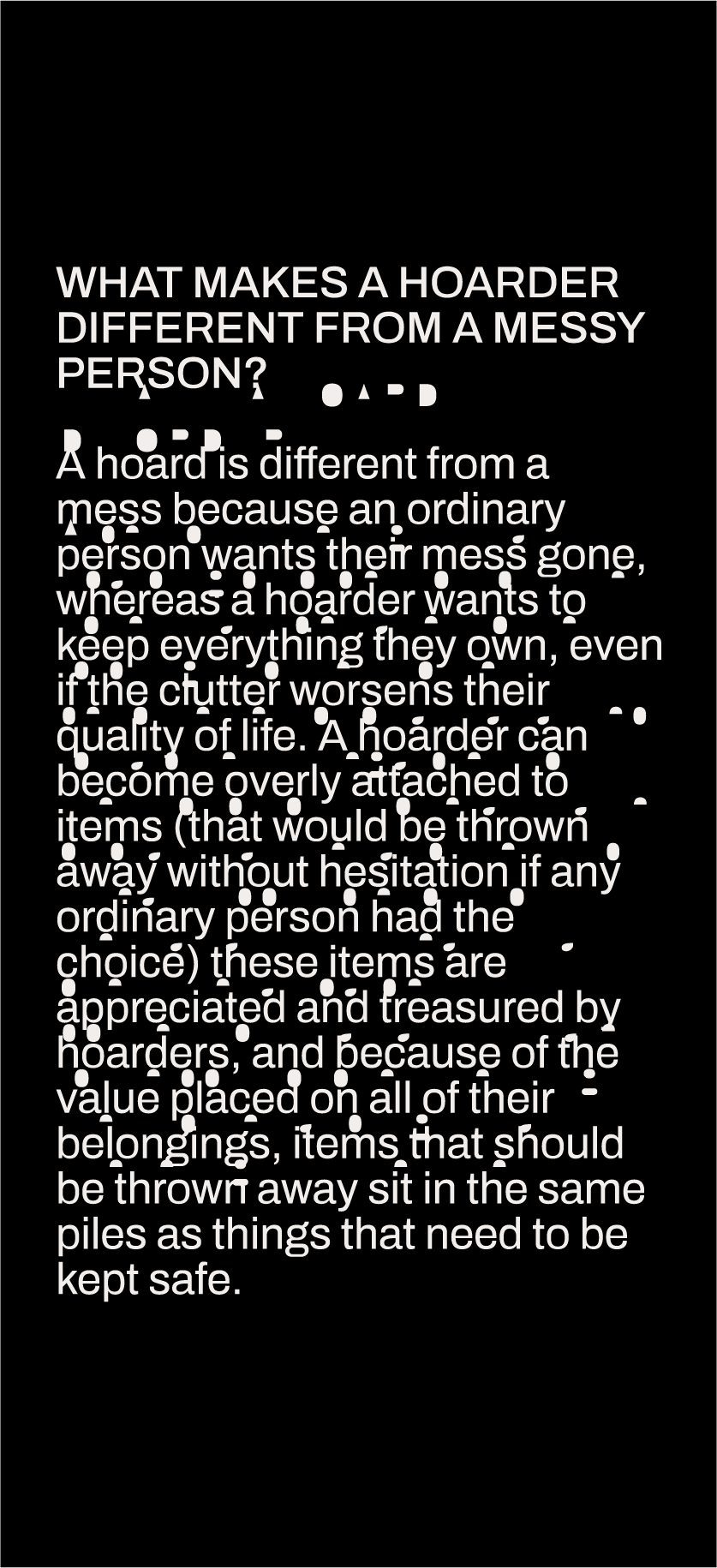


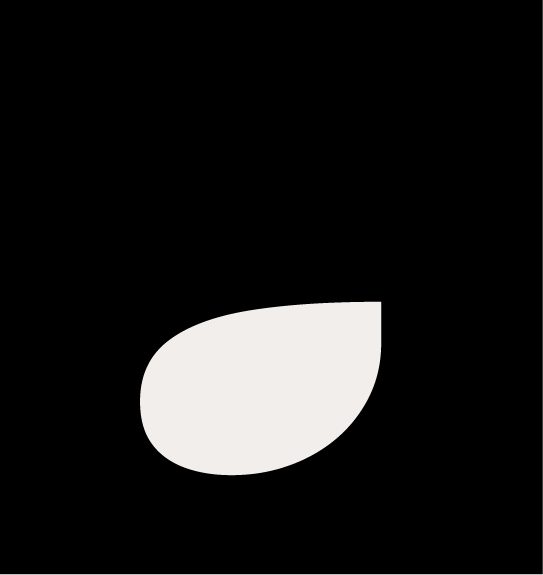
Awards
Scholarship for Academic Excellence and Outstanding Performance – issued for having the highest mark of my year within the university’s School of Creative Design and Arts.
Work Experience
Layout Artist 2018
Brand Design 2019-2020
Visionary Thinkers
Visionary Creators
Visionary Makers
